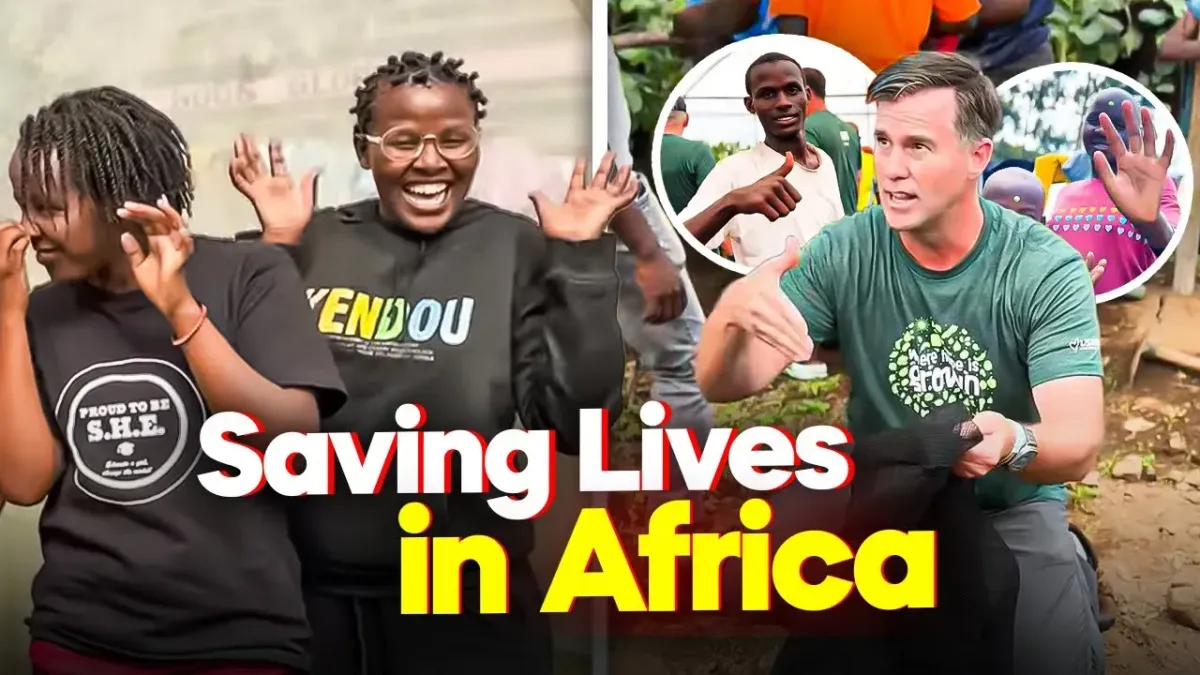
Growing Hope in Kenya
Growing Hope in Kenya: How Garden Towers Are Ending Hunger One Family at a Time
In rural Kenya, hunger isn’t just about having enough food—it’s about access, opportunity, and survival.
For families relying on unpredictable farm labor and struggling through frequent droughts, feeding their children becomes a daily battle.
But what if a simple, affordable garden could transform everything?
The Problem: Hunger, Drought, and a Lack of Options
Across Kenya’s rural communities, growing food is harder than ever. Land may be available, but water is not. Most families lack access to the resources, tools, and knowledge needed to farm at home. Instead, many depend on temporary jobs at commercial farms—when those jobs are available.
When work disappears, so does income. Without income, there’s no food on the table. Children go to school hungry or drop out altogether to help earn money. Families are trapped in a cycle of hunger and hardship, with no clear way out.
The Guide: A Simple Solution That Transforms Lives
At 100 Humanitarians International, we knew something had to change. Families needed a way to grow their own food—with minimal land, minimal water, and maximum impact.
That’s why we created Garden Tower farming: a vertical gardening system that empowers families to grow food at home, even in drought conditions.
Each Garden Tower is made from shade fabric, stands about 4 feet tall, and is 2.5 feet in diameter. It’s compact enough to fit in small yards and powerful enough to grow up to 120 vegetable plants. Even better—it uses 30% less water than traditional farming.
These towers provide enough fresh vegetables to feed a family of five 3 to 5 meals per week, week after week.
The cost? Just $5 per family member.
The Plan: How Garden Tower Farming Works
We keep the process simple and effective:
Train the Family – We provide hands-on training so families know how to build, plant, and care for their Garden Towers using local materials.
Grow with Less Water – The towers are designed to conserve water, making them ideal for arid regions and drought-prone communities.
Harvest and Thrive – Families feed their children first, then use the extra produce to sell or trade for school fees, clothing, or other household needs.
The Garden Tower becomes more than a food source—it’s a tool for economic empowerment and dignity.
The Success Stories: From Struggling to Self-Reliant
Miriam’s Story: From Day Labor to Garden Entrepreneur
Miriam used to depend on seasonal farm work to feed her kids. On days when there was no work, her family went without meals. After receiving her first Garden Tower, she began growing enough vegetables to feed her children—and even had extra to sell at the market. That small success sparked more. Miriam started raising chickens, then goats. Today, she earns a steady income and sends all of her children to school.
Her story isn’t unique. Garden Towers have helped hundreds of families break free from the cycle of poverty and start building a better future.
What Success Looks Like
Imagine a future where no child goes to bed hungry. Where mothers no longer choose between buying food or paying school fees. Where families grow their own vegetables, sell their surplus, and build a future rooted in self-reliance.
That’s the future we’re working toward.
And with your help, we can get there faster.
Our goal is to reach 20,000 more families—feeding 100,000 people with Garden Tower farming.
FAQs: What You Might Be Wondering
Does a Garden Tower really provide enough food?
Yes. Each tower supports up to 120 plants and provides 3–5 meals per week for a family of five.
How does it work with so little water?
The vertical design is specifically created to conserve water. Moisture moves downward efficiently, requiring far less water than traditional gardens.
Is it sustainable long-term?
Absolutely. Once a family is trained, they can maintain and replant the tower year-round—and many go on to expand their gardens or launch small livestock projects.
Call to Action: Help End Hunger—One Garden at a Time
We’ve already seen Garden Tower farming transform hundreds of lives. But thousands more families are still waiting for this solution.
You can help.
Just $5 per person is all it takes to launch a family’s journey toward food security and self-reliance.
👉 Donate a Garden Tower today or join us on a humanitarian expedition to help build Garden Towers in Kenya.
Together, we can end hunger—one family, one garden at a time.
Final Thought: You Can Be the Change
Hope doesn’t require grand gestures. Sometimes, it begins with one simple act—like helping a family grow a garden.
Your gift isn’t just a donation. It’s a seed of change.
Let’s plant it—together.
